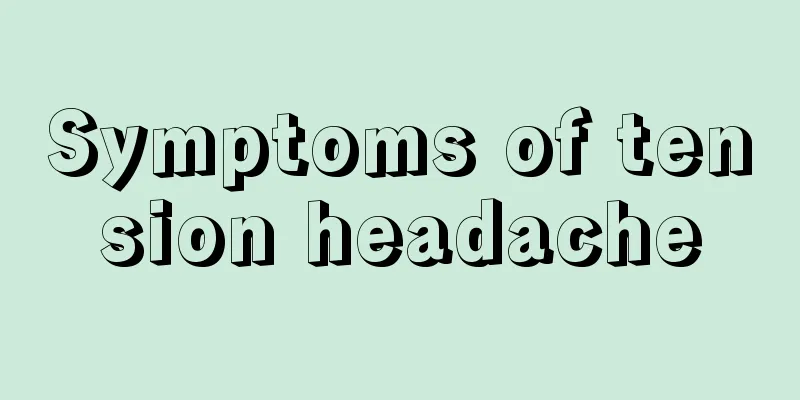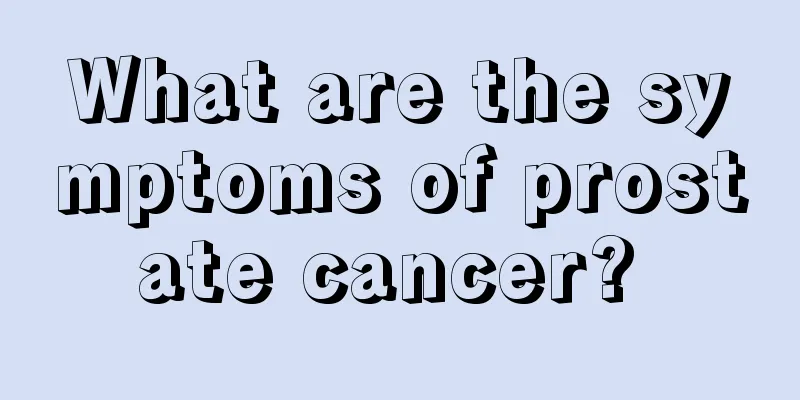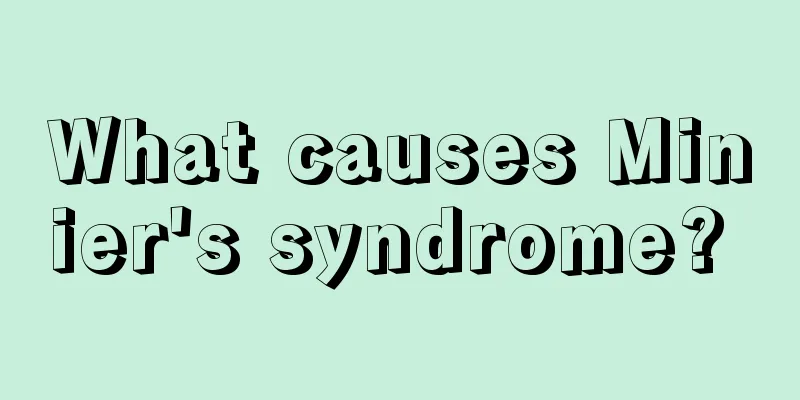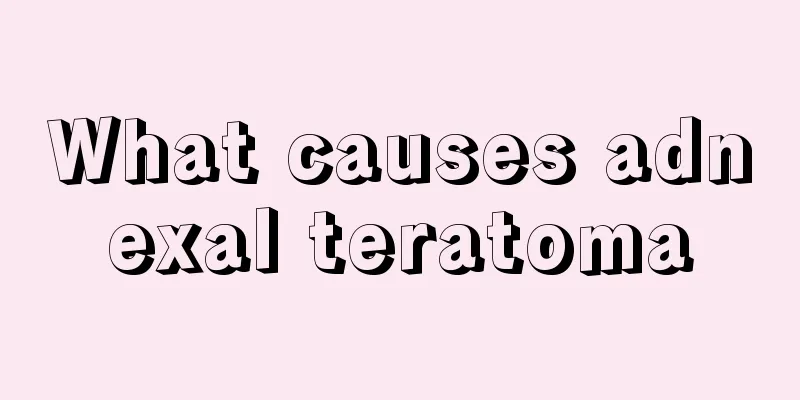Symptoms of tension headache

|
Headache is a very common disease in our life, and the causes of headache are varied, including neuralgia, compression headache, and overuse headache. So when patients feel headache, they should try to reduce the use of brain, take proper rest or sleep. Sometimes headache may also be caused by tumor in the brain compressing the nerves. So what are the symptoms of tension headache? Tension headache causes Tension headaches are caused by persistent contraction of the head and neck muscles. The reasons for this contraction include: 1. as a result of anxiety or depression accompanied by mental tension; 2. as a secondary symptom of headaches or pain in other parts of the body due to other reasons; 3. caused by poor posture of the head, neck, and shoulder girdle. Clinical manifestations Tension headache is more common in young and middle-aged people, and children can also suffer from it, regardless of gender. The symptoms are mild at the beginning and then gradually become significantly worse. The clinical characteristics of tension headache are dull pain in the head without pulsation. The headache is located in the top, temporal, forehead and occipital parts, and sometimes all of the above parts have pain. The degree of headache is mild or moderate, and is not aggravated by physical activity. Patients often complain of a tight pressure on the top of the head or a feeling of tightness on the head. Tension headaches are common in young and middle-aged people. In addition, the occipital and neck areas are tight and stiff, which is particularly obvious when the neck is turned. There is no photophobia or phonophobia. A few patients are accompanied by mild irritability or depression. Physical examination including neurological examination shows no positive signs. The muscles around the skull, such as the occipital muscles, the top of the head and the upper shoulders are often tender, and sometimes gently massaged. The patient feels relaxed and comfortable. Brain CT or MRI should be normal, and there should be no hypertension or obvious ENT diseases. Differential Diagnosis 1. Migraine It is a vascular headache that is common in young and middle-aged people and children. The headache is located on one side of the temporal, frontal and orbital region and is pulsating, often accompanied by nausea and vomiting. It is an paroxysmal headache. There may be visual disturbances before the headache, such as blurred vision, blind spots in the field of vision, or hemianopsia. It may also start without any precursors and the hemiplegic headache usually lasts for several hours or days before being relieved. A very small number of patients have a persistent migraine state. In a small number of patients, migraine and tension-type headache may coexist, making it difficult to distinguish between the two. 2. Cluster headaches It is vascular and related to hypothalamic dysfunction. The headache is located on one side of the orbital, temporal and frontal areas. In severe cases, it may spread to the entire head. The headache attacks are intensive, severe and without aura. The headache attacks rapidly and may stop suddenly, and is accompanied by conjunctival congestion, tearing, runny nose, and sweating. A few may experience ptosis. The attacks occur several times a day and may occur during sleep. Each attack lasts from tens of minutes to several hours and may last for several days to several weeks. However, the remission period can last for several months to several years. It is not difficult to distinguish it from tension-type headache by taking detailed medical history and observing the attacks. 3. Trigeminal neuralgia It is an episodic, short-term, severe pain in the distribution area of the trigeminal nerve in the face. Each pain lasts only a few seconds and occurs several to dozens of times a day. The pain is like a knife cutting, burning or needle-like pain, which is often triggered by washing the face, brushing teeth, talking or chewing. People can often pinpoint locations that trigger pain, called trigger points. This disease is more common in middle-aged and elderly people, with the second and third branches of the trigeminal nerve being more frequently affected. If only the first branch is affected, special attention should be paid to distinguish it from ETTH. |
<<: What are the symptoms of kidney failure
>>: Symptoms of deep vein thrombosis
Recommend
What are the items in liver function test? How often should liver function test be performed?
Liver function test is an important screening met...
Is skin cancer dangerous?
Is skin cancer harmful? Skin cancer is a serious ...
Can purple oil wood leaves repel mosquitoes?
There are many animals and plants in nature. With...
What are the dangers of cross syndrome
Upper body examination syndrome is a very common ...
What should I do if I have a lumbar muscle strain
For the problem of lumbar muscle strain, patients...
What are the benefits of squats for running?
There are many people who like running, and runni...
What is radionuclide therapy and what are its effects?
Nuclear therapy is a method of treating tumors. I...
How much liquor is good for your health?
Liquor is an indispensable item on the Chinese di...
Spring maintenance guide
The climate changes a lot in spring, and it is al...
Choosing the right method to care for lymphoma patients
The harm of lymphoma is very great, which brings ...
What are the magical uses of expired lipstick
Sometimes you buy a lipstick but don’t have time ...
What are the effects and functions of mung bean pillow?
Mung bean is a very common food in daily life. It...
Is honey useful for removing eye bags?
Modern young people are under a lot of pressure i...
What are the consequences of a child being slapped in the face?
As we all know, babies are sometimes very naughty...
There are many small bumps on the face
Everyone loves beauty and hopes that their skin i...









